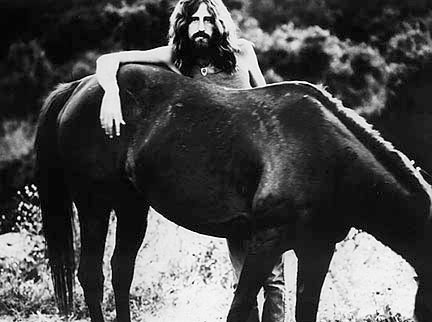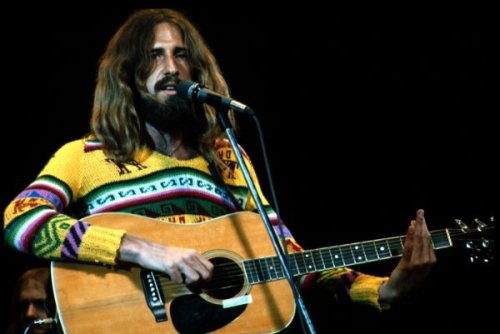Having followed United’s current talented crop of youngsters through their Youth Cup campaign so far, I was delighted to see them reach this year’s final and start tonight’s second leg with a good chance of lifting the trophy. The teams started the game all square after last week’s exciting 2-2 first leg at Bramhall Lane. The crowd at Old Trafford tonight, though not as large as last week’s near-30,000 sell-out was still respectable and included over 6,000 travelling Blades fans who had made the short journey over the Snake Pass.
Both teams began with exactly the same starting XI’s as last week, though United’s bench was strengthened by the return of Larnell Cole from injury and Tyler Blackett from suspension. Sheffield had been concerned about the fitness of centre-back Harry Maguire, who limped off towards the end of the first leg, but he had recovered sufficiently to start.
The first half was a curious affair; United overplayed and gave the ball away with monotonous regularity whilst Sheffield pressed United whenever they were in possession and controlled the game. Despite this, Sheffield were unable to get any shots on target and Sam Johnstone in the United goal had a watching brief for the most part. His counterpart in the Sheffield goal, George Long, was somewhat busier and had to make a sprawling save as Ravel Morrison latched on to Paul Pogba’s astute pass to burst through on the right. Morrison can be a menace when running at defenders with the ball, seeming to glide past opponents, but, as in the first leg, he was running into blind alleys and giving the ball away far too often. John Pemberton’s Sheffield are a team built around a strong team ethic and they covered and harried and blocked United’s attempts to find a killer pass. Worryingly for the Blades, however, their one stand-out star performer, striker Jordan Slew, was looking nothing like as dangerous as he had in the first leg.
As half-time approached it seemed that neither team was going to be able to seize the initiative, but then United scored twice in quick succession to take a stranglehold on the tie. First, on 38 minutes, full-back Michael Keane burst forward on the overlap for virtually the first time. His low cross was headed clear by Kennedy but fell into the path of Michael’s twin brother, Will. He completely scuffed his attempted first-time shot, but the ball squirted conveniently into the path of Ravel Morrison, who was allowed time to control the ball before firing a low shot from about 12 yards out into the bottom right-hand corner of Long’s net.
Sheffield responded strongly with a series of efforts that passed close to Johnstone’s goal without hitting the target. Then, as the clock ticked over into added time at the end of the half, United struck a second killer blow. Morrison got away down the right side of the Sheffield defence and clipped a left-footed cross towards the lurking Will Keane at the near post. Keane was poised to bullet a header past Long for the second goal, when the covering Terry Kennedy inexplicably stuck out an arm to divert the ball over the crossbar. Referee Michael Oliver awarded the penalty but took no further action against Kennedy and Will Keane stepped up to calmly slot home the spot-kick.
Will Keane slots home his penalty with a minimum of fuss…
United began the second half in a more relaxed manner and both Academy Player of the Year Ryan Tunnicliffe and Paul Pogba began to find more space in the central areas. Pogba threatened to extend United’s lead with an explosive drive from 35 yards that Long beat away, but then proceedings were halted for more than 6 minutes after Sheffield’s Harry Maguire suffered what looked like a nasty concussion in an innocuous aerial challenge with Morrison.
Sheffield seemed to be running out of ideas to get themselves back in the game and with Slew well-marshalled by Fornasier and Thorpe at the back, United looked comfortable for the most part. They became even more comfortable after 70 minutes as Ravel Morrison again ghosted forward and manoeuvred himself sufficient space to drift a right-footed shot across Long for United’s third.
Ravel Morrison was a constant threat to Sheffield’s goal
Within two minutes, however, Sheffield were given a foothold in the game thanks to some gung-ho attacking from United. Sheffield broke quickly out of defence with United short on numbers in defence and when Slew floated the ball over the head of the back-pedalling Fornasier, Joe Ironside (great name for a Sheffield footballer!) was able to control the ball and steer a shot past the advancing Johnstone. Remarkably, this was Sheffield’s first shot on target.
Roared on by their travelling support, Sheffield made renewed and vigorous attempts to further reduce the deficit, but United introduced the lively Larnell Cole for Jesse Lingard after 78 minutes and he made an immediate impact with a number of penetrative forays down the right. After 82 minutes, Cole got away yet again and with Sheffield’s defence caught pushing too far forward, it was their turn to be undermanned at the back. Cole’s half-hit pass to Will Keane was intercepted by the covering McFadzean on the edge of the Sheffield area, but he then promptly lost the ball again to the predatory Will Keane, who took the ball on and dummied both Kennedy and goalkeeper Long at least twice before calmly sliding a low shot into the net. This was Keane’s 5th goal in 2 Old Trafford games this year. If he keeps that up, he’ll be in the first team before too long!
So, 4-1 to United on the night, 6-3 on aggregate and after Keane’s second goal, there was a feeling that the game was up as far as Sheffield were concerned. They have great spirit and it’s easy to see how their collective strength and terrific organisation got them this far, but on the night Lady Luck didn’t smile on them and they were eventually undone by a tremendous second-half showing from United and from Ravel Morrison in particular. The game was contested right through to the end of 7 minutes of time added on for Maguire’s injury and though both teams had their moments, there were no further goals. To be honest, 6-3 rather flatters United – it was a bit closer than such a scoreline would suggest. Despite that, United were worthy winners of the Tournament and Tom Thorpe lifted the Cup for a record 10th time in front of an appreciative crowd, most of whom stayed on and braved being deafened by the appalling Queen’s appalling ‘We are the Champions’ in order to see the youngsters rivalling the first team for the exuberant daftness of their celebrations.
Statement for the Defence – (L-R) Michael Keane, Scott McGinty, Tom Thorpe and Michele Fornasier with the F.A. Youth Cup
Tonight wasn’t a great game – certainly not a patch on last week’s first leg in Sheffield – but as guest MUTV pundit Gary Neville pointed out, cup finals are there to be won and often the importance of the result outweighs the importance of the performance. United did what they needed to do to get the result their performances in this competition have deserved. As well as the trophy, United’s F.A. Youth Cup campaign may also have seen the dawning of a new era because there have been 4 key performers in the squad – Keane, Pogba, Tunnicliffe and Morrison – for whom the future looks very bright indeed – and there may be others; Lingard and Cole are both super-talented but need to (physically) grow a bit and Tyler Blackett is showing huge promise for a first-year scholar – he should be back to help United defend this trophy next year. Ravel Morrison’s future prospects may be influenced by the consequences of his off-field activities; he is up in court over the next few days on quite serious charges involving criminal damage and assault. Once he – hopefully – decides that he would rather be a Manchester United player than a Davyhulme hoodlum, he should be OK.
So, congratulations to coach Paul McGuinness and his staff and to all the players for a fantastic run in this year’s tournament. It’s been great to watch – often a lot more fun than the first team, frankly.
It’s been a good week for picking up trophies, with the first team yesterday and the Under-18’s tonight, so let’s hope that good things do come in threes and that the first team can put one over on Barcelona on Saturday. Fingers crossed.






